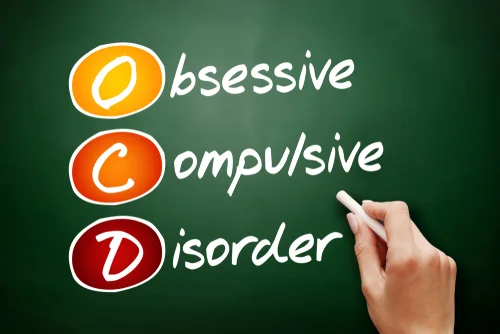Obsessive Compulsive Disorder (OCD), or having obsessive traits, is a common diagnosis. In the United States, about 1 in 40 adults are diagnosed with OCD. It’s also a frequent diagnosis treated at Good Therapy SF.
Since OCD has a neurological basis, it is often best treated with cognitive behavioral therapy and medication. While OCD can be highly disruptive, especially during times of stress, it is important to know OCD is treatable.
Obsessive thoughts and compulsive behaviors that cause anxiety or distress are the prominent features of OCD
Sometimes, people have obsessive impulses or images in addition to / instead of the thoughts.
These thoughts / impulses / images are more than excessive worries about real life problems
There are attempts to stop the thoughts (usually with another thought or behavior)
Often, people with OCD are aware these obsessive thoughts and compulsive behaviors are excessive or unreasonable

A trained psychologist or mental health professional will perform a clinical interview to assess the OCD symptoms. Often the professional will also use a psychological assessment during this interview. The Yale-Brown Obsessive Compulsive Scale is one such assessment.
There are different types of OCD triggers. Below is an example of Contamination OCD.
Obsessive Thought: My hands are dirty
Resulting Emotion: Anxiety
Compulsive Behavior: hand washing
Follow up Obsessive Thought: I know they should be clean, but I just can’t stop thinking that my hands might be dirty.
Resulting Emotion: Anxiety
Follow up Compulsive Behavior: re-wash hands. The behavior to rewash reduces the anxiety – but only while the hand washing occurs. Anxiety levels increase immediately after hand washing is completed.
This is the most common form of OCD treated at Good Therapy SF.
Pure O symptoms only include the obsessional thoughts, impulses, or images. There is an absence of ritualistic behavior. However, there are usually hidden mental rituals. Failure to complete these rituals contributes to guilt, shame, anxiety, and avoidance.
For example, someone with Pure O might be convinced they are not good enough or “unworthy” for their job. The mental rituals can be tests they set for themselves during the day to try and prove they are good enough. People often fail these daily tests. This creates high levels of stress. As a result, they feel the only option to cope is to reach out to others for reassurance. This feedback loop is then repeated.
CBT therapists employ a specific technique called Exposure Response Prevention (ERP).
ERP focuses on exposing someone to their fear / trigger without letting them engage in their obsessive compulsions.
Prior the exposure, people are taught more effective coping skills and relaxation strategies to use during the exposure process. There are many ways to customize ERP for each person, but overall this strategy has been shown to be highly effective.
The focus is on learning to change the compulsion and not challenge the “right-ness” or “rationale” of an obsessive thought.
Change comes from reducing the compulsion, not the obsession.
For more help with OCD, Pure O, and other types of obsessive anxiety issues feel free to reach out to goodtherapysf.com